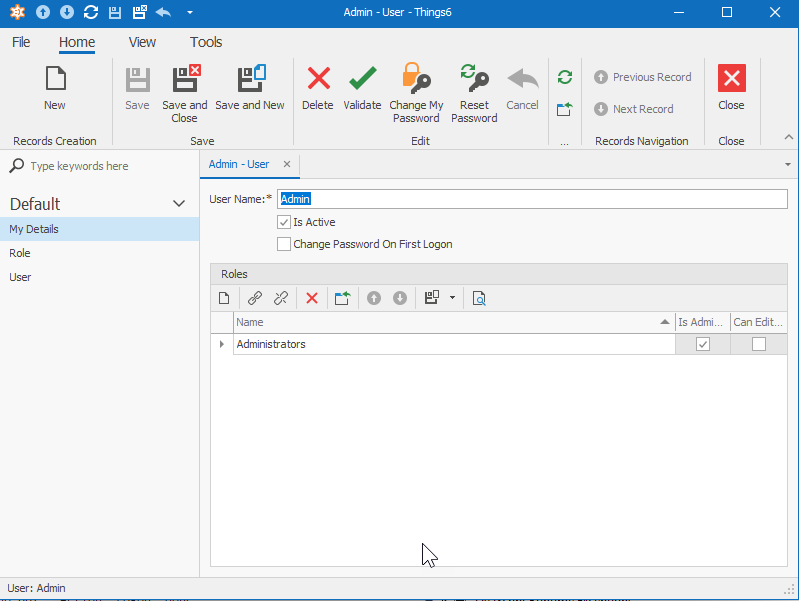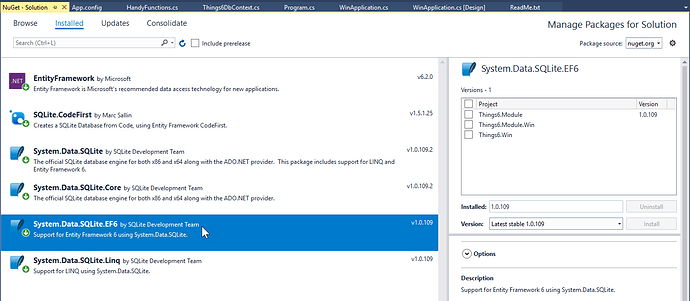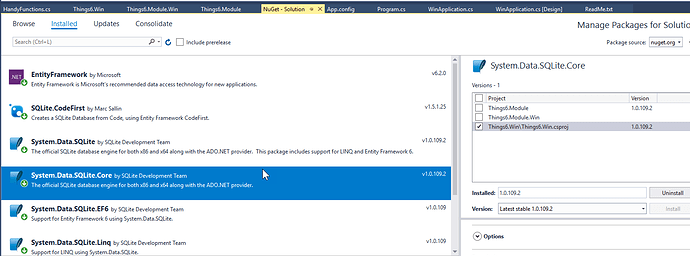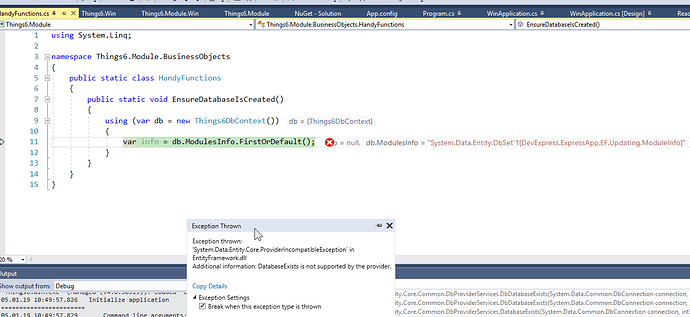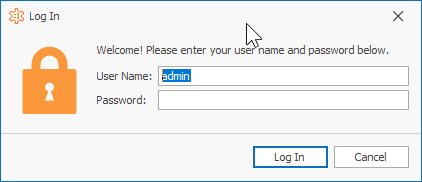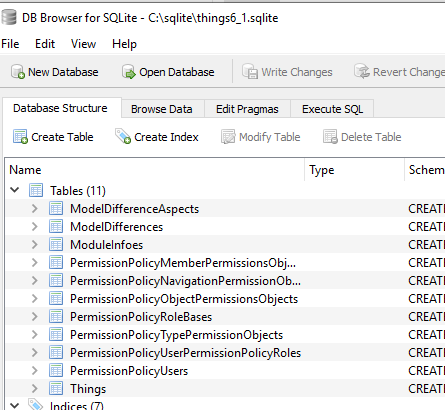There seem to be a few tricks getting these things to play nicely together.
I have written up my progress as I went. Sometimes I took a blind turn such as installing several packages in the win project when it turned out I could get away with one.
I have left these blind turns in as I am logging the steps I took ( i.e working out loud ) but I have also revisited some parts to add comments and side bar icons like the key to indicate a Key Point.
This project is on GitHub
- Create initial project
- Upgrade to EF 6.2 using Nuget
- Add SQLite.CodeFirst using Nuget
- Add System.Data.Sqlite using Nuget
Alter the program so we can follow the database creation more easily
try {
// access db so it is created here.
HandyFunctions.EnsureDatabaseIsCreated();
// end of modification
winApplication.Setup();
winApplication.Start();
}
catch(Exception e) {
winApplication.HandleException(e);
}
where HandyFunctions is in the Data Access Module.
using System.Linq;
namespace Things6.Module.BusinessObjects
{
public static class HandyFunctions
{
public static void EnsureDatabaseIsCreated()
{
using (var db = new Things6DbContext())
{
var info = db.ModulesInfo.FirstOrDefault();
}
}
}
}
Run it with Admin as the user
Oops, but we are still using Entity Framework. I need to fix app.config
<?xml version="1.0"?>
<configuration>
<configSections>
<section name="entityFramework" type="System.Data.Entity.Internal.ConfigFile.EntityFrameworkSection, EntityFramework, Version=6.0.0.0, Culture=neutral, PublicKeyToken=b77a5c561934e089" requirePermission="false"/>
</configSections>
<appSettings>
<add key="Modules" value=""/>
<add key="NewVersionServer" value=""/>
<add key="EnableDiagnosticActions" value="False"/>
</appSettings>
<system.data>
<DbProviderFactories>
<remove invariant="System.Data.SQLite.EF6" />
<add name="SQLite Data Provider (Entity Framework 6)"
invariant="System.Data.SQLite.EF6"
description=".NET Framework Data Provider for SQLite (Entity Framework 6)"
type="System.Data.SQLite.EF6.SQLiteProviderFactory, System.Data.SQLite.EF6" />
<remove invariant="System.Data.SQLite" />
<add name="SQLite Data Provider" invariant="System.Data.SQLite"
description=".Net Framework Data Provider for SQLite"
type="System.Data.SQLite.SQLiteFactory, System.Data.SQLite" />
</DbProviderFactories>
</system.data>
<entityFramework>
<providers>
<provider invariantName="System.Data.SQLite.EF6"
type="System.Data.SQLite.EF6.SQLiteProviderServices, System.Data.SQLite.EF6" />
<provider invariantName="System.Data.SQLite"
type="System.Data.SQLite.EF6.SQLiteProviderServices, System.Data.SQLite.EF6" />
</providers>
</entityFramework>
<connectionStrings>
<add name="ConnectionString" connectionString="Data Source=c:\sqlite\things6_1.sqlite" providerName="System.Data.SQLite"/>
</connectionStrings>
<system.diagnostics>
<switches>
<!-- Use the one of predefined values: 0-Off, 1-Errors, 2-Warnings, 3-Info, 4-Verbose. The default value is 3. -->
<add name="eXpressAppFramework" value="3"/>
<!--
<add name="XPO" value="3" />
-->
</switches>
</system.diagnostics>
<startup>
<supportedRuntime version="v4.0" sku=".NETFramework,Version=v4.7.2"/>
</startup>
</configuration>
Oops, looks like I am missing something
The Entity Framework provider type 'System.Data.SQLite.EF6.SQLiteProviderServices, System.Data.SQLite.EF6' registered in the application config file for the ADO.NET provider with invariant name 'System.Data.SQLite.EF6' could not be loaded. Make sure that the assembly-qualified name is used and that the assembly is available to the running application. See http://go.microsoft.com/fwlink/?LinkId=260882 for more information.
at System.Data.Entity.Infrastructure.DependencyResolution.ProviderServicesFactory.GetInstance(String providerTypeName, String providerInvariantName)
at System.Data.Entity.Internal.AppConfig.<.ctor>b__2(ProviderElement e)
at System.Linq.Enumerable.WhereSelectEnumerableIterator`2.MoveNext()
at System.Collections.Generic.List`1..ctor(IEnumerable`1 collection)
at System.Linq.Enumerable.ToList[TSource](IEnumerable`1 source)
at System.Data.Entity.Internal.AppConfig.<.ctor>b__1()
at System.Lazy`1.CreateValue()
at System.Lazy`1.LazyInitValue()
at System.Lazy`1.get_Value()
at System.Data.Entity.Internal.AppConfig.get_DbProviderServices()
at System.Data.Entity.Infrastructure.DependencyResolution.AppConfigDependencyResolver.RegisterDbProviderServices()
at System.Data.Entity.Infrastructure.DependencyResolution.AppConfigDependencyResolver.GetServiceFactory(Type type, String name)
at System.Data.Entity.Infrastructure.DependencyResolution.AppConfigDependencyResolver.<>c__DisplayClass1.<GetService>b__0(Tuple`2 t)
at System.Collections.Concurrent.ConcurrentDictionary`2.GetOrAdd(TKey key, Func`2 valueFactory)
at System.Data.Entity.Infrastructure.DependencyResolution.AppConfigDependencyResolver.GetService(Type type, Object key)
at System.Data.Entity.Infrastructure.DependencyResolution.ResolverChain.<>c__DisplayClass3.<GetService>b__0(IDbDependencyResolver r)
at System.Linq.Enumerable.WhereSelectArrayIterator`2.MoveNext()
at System.Linq.Enumerable.FirstOrDefault[TSource](IEnumerable`1 source, Func`2 predicate)
at System.Data.Entity.Infrastructure.DependencyResolution.ResolverChain.GetService(Type type, Object key)
at System.Data.Entity.Infrastructure.DependencyResolution.CompositeResolver`2.GetService(Type type, Object key)
at System.Data.Entity.Infrastructure.DependencyResolution.DbDependencyResolverExtensions.GetService[T](IDbDependencyResolver resolver)
at System.Data.Entity.DbContext.InitializeLazyInternalContext(IInternalConnection internalConnection, DbCompiledModel model)
at System.Data.Entity.DbContext..ctor(String nameOrConnectionString)
at Things6.Module.BusinessObjects.Things6DbContext..ctor() in D:\dev\Things6\Things6.Module\BusinessObjects\Things6DbContext.cs:line 22
at Things6.Module.BusinessObjects.HandyFunctions.EnsureDatabaseIsCreated() in D:\dev\Things6\Things6.Module\BusinessObjects\HandyFunctions.cs:line 9
at Things6.Win.Program.Main() in D:\dev\Things6\Things6.Win\Program.cs:line 49
So add System.Data.SQLite.EF6 using Nuget?
Hmm actually it already shows as there.
Ah now I remember I need to set up the initializer
I learned that after a struggle a few days ago.
Public Things6DbContext(String connectionString)
: base(new SQLiteConnection() { ConnectionString = connectionString }, true)
{
}
Ah a new problem
he Entity Framework provider type 'System.Data.SQLite.EF6.SQLiteProviderServices, System.Data.SQLite.EF6' registered in the application config file for the ADO.NET provider with invariant name 'System.Data.SQLite.EF6' could not be loaded. Make sure that the assembly-qualified name is used and that the assembly is available to the running application. See http://go.microsoft.com/fwlink/?LinkId=260882 for more information.
at System.Data.Entity.Infrastructure.DependencyResolution.ProviderServicesFactory.GetInstance(String providerTypeName, String providerInvariantName)
at System.Data.Entity.Internal.AppConfig.<.ctor>b__2(ProviderElement e)
at System.Linq.Enumerable.WhereSelectEnumerableIterator`2.MoveNext()
at System.Collections.Generic.List`1..ctor(IEnumerable`1 collection)
at System.Linq.Enumerable.ToList[TSource](IEnumerable`1 source)
at System.Data.Entity.Internal.AppConfig.<.ctor>b__1()
at System.Lazy`1.CreateValue()
at System.Lazy`1.LazyInitValue()
at System.Lazy`1.get_Value()
at System.Data.Entity.Internal.AppConfig.get_DbProviderServices()
at System.Data.Entity.Infrastructure.DependencyResolution.AppConfigDependencyResolver.RegisterDbProviderServices()
at System.Data.Entity.Infrastructure.DependencyResolution.AppConfigDependencyResolver.GetServiceFactory(Type type, String name)
at System.Data.Entity.Infrastructure.DependencyResolution.AppConfigDependencyResolver.<>c__DisplayClass1.<GetService>b__0(Tuple`2 t)
at System.Collections.Concurrent.ConcurrentDictionary`2.GetOrAdd(TKey key, Func`2 valueFactory)
at System.Data.Entity.Infrastructure.DependencyResolution.AppConfigDependencyResolver.GetService(Type type, Object key)
at System.Data.Entity.Infrastructure.DependencyResolution.ResolverChain.<>c__DisplayClass3.<GetService>b__0(IDbDependencyResolver r)
at System.Linq.Enumerable.WhereSelectArrayIterator`2.MoveNext()
at System.Linq.Enumerable.FirstOrDefault[TSource](IEnumerable`1 source, Func`2 predicate)
at System.Data.Entity.Infrastructure.DependencyResolution.ResolverChain.GetService(Type type, Object key)
at System.Data.Entity.Infrastructure.DependencyResolution.CompositeResolver`2.GetService(Type type, Object key)
at System.Data.Entity.Infrastructure.DependencyResolution.DbDependencyResolverExtensions.GetService[T](IDbDependencyResolver resolver)
at System.Data.Entity.DbContext.InitializeLazyInternalContext(IInternalConnection internalConnection, DbCompiledModel model)
at System.Data.Entity.DbContext..ctor(String nameOrConnectionString)
at Things6.Module.BusinessObjects.Things6DbContext..ctor() in D:\dev\Things6\Things6.Module\BusinessObjects\Things6DbContext.cs:line 25
at Things6.Module.BusinessObjects.HandyFunctions.EnsureDatabaseIsCreated() in D:\dev\Things6\Things6.Module\BusinessObjects\HandyFunctions.cs:line 9
at Things6.Win.Program.Main() in D:\dev\Things6\Things6.Win\Program.cs:line 49
